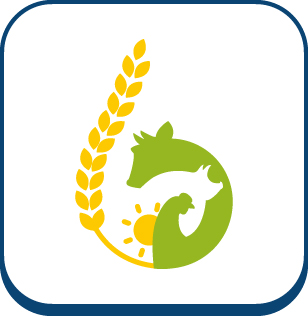Background. Intense selection of modern pig breeds has resulted in genetic improvement of production traits while the performance of local pig breeds has remained lower. As local pig breeds have been bred in extensive systems, they have adapted to specifc environmental conditions, resulting in a rich genotypic and phenotypic diversity.
This study is based on European local pig breeds that have been genetically characterized using DNA-pool sequencing data and phenotypically characterized using breed level phenotypes related to stature, fatness, growth, and reproductive performance traits. These data were analyzed using a dedicated approach to detect signatures of selection linked to phenotypic traits in order to uncover potential candidate genes that may underlie adaptation to specific environments.
Results. Analysis of the genetic data of European pig breeds revealed four main axes of genetic variation represented by the Iberian and three modern breeds (i.e. Large White, Landrace, and Duroc). In addition, breeds clustered according to their geographical origin, for example French Gascon and Basque breeds, Italian Apulo Calabrese and Casertana breeds, Spanish Iberian, and Portuguese Alentejano breeds. Principal component analysis of the phenotypic data distinguished the larger and leaner breeds with better growth potential and reproductive performance from the smaller and fatter breeds with low growth and reproductive efciency. Linking the signatures of selection with phenotype identifed 16 significant genomic regions associated with stature, 24 with fatness, 2 with growth, and 192 with reproduction. Among them, several regions contained candidate genes with possible biological efects on stature, fatness, growth, and reproductive performance traits. For example, strong associations were found for stature in two regions containing, respectively, the ANXA4 and ANTXR1 genes, for fatness in a region containing the DNMT3A and POMC genes and for reproductive performance in a region containing the HSD17B7 gene.
Conclusions. In this study on European local pig breeds, we used a dedicated approach for detecting signatures of selection that were supported by phenotypic data at the breed level to identify potential candidate genes that may have adapted to different living environments and production systems.
Article en accès ouvert sur le site de l'éditeur ici.
A meta-analysis of genetic and phenotypic diversity of European local pig breeds reveals genomic regions associated with breed differentiation for production traits
Ajouter à ma liste
Auteurs :
Poklukar K, Mestre C, Škrlep M, Čandek-Potokar M, Ovilo C, Fontanesi L, Riquet J, Bovo S, Schiavo G, Ribani A, Munoz M, Gallo M, Bozzi R, Charneca R, Quintanilla R, Kusec G, Mercat MJ, Zimmer C, Razmaite V, Araujo JP, Radovic C, Savic R, Karolyi D, Servin B
Fiche technique
Titre :
A meta-analysis of genetic and phenotypic diversity of European local pig breeds reveals genomic regions associated with breed differentiation for production traits
Date sortie / parution :
2023
Référence :
Genetics selection evolution, volume 55, n° 88, 2023, 17 pages








